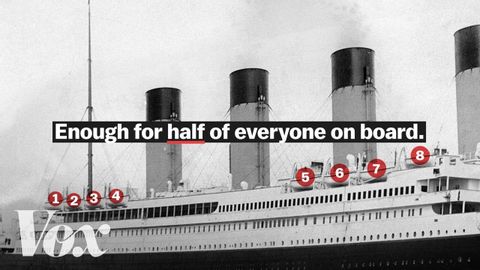為什麼鐵達尼號上的救生艇數量遠遠不夠?(Why the Titanic didn't have enough lifeboats)
Minjane 發佈於 2023 年 02 月 18 日  沒有此條件下的單字
沒有此條件下的單字US /pɚˈspɛktɪv/
・
UK /pə'spektɪv/
- n. (c./u.)透視;觀點,態度;觀點;恰當的比重
US /ˈækˌsɛnt/
・
UK /'æksent/
US /kəˈpæsɪti/
・
UK /kə'pæsətɪ/
- n. (c./u.)容量;能量;生產力;能力;才能;地位;職位;電容;法律行為能力
US /ˈkɑnfɪdəns/
・
UK /'kɒnfɪdəns/
